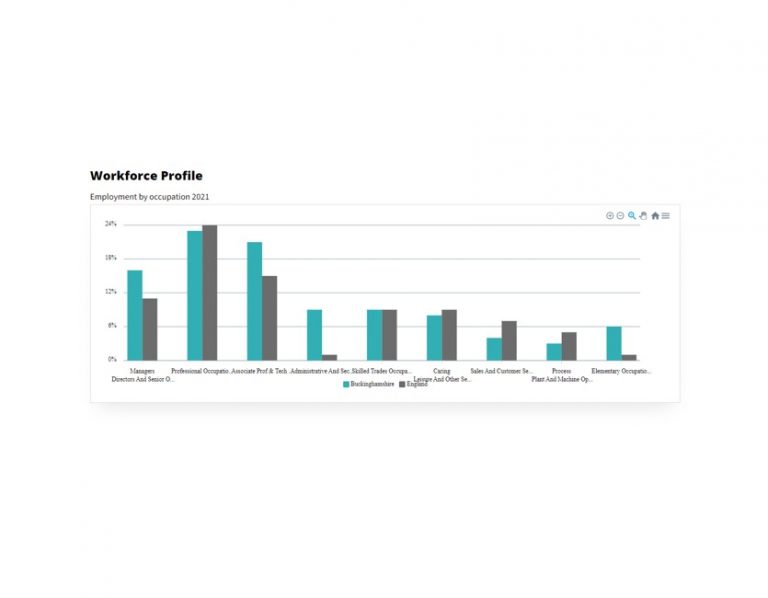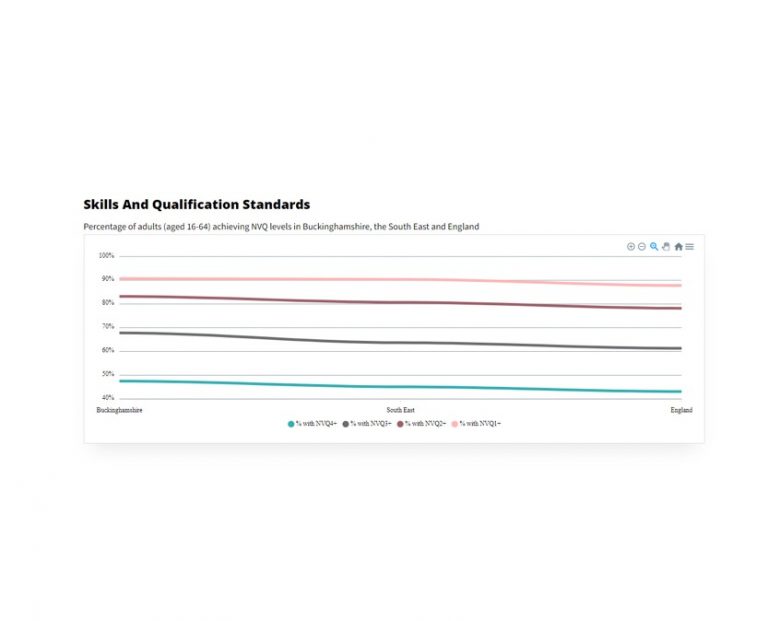Introduction
Buckinghamshire has a thriving economy with a GDP of £18.5bn (ONS, 2021) and the 45th highest GDP per head out of 179 regional areas in the country. Buckinghamshire also has an extremely skilled and educated population and a very low claimant count: 2.6% adults in Buckinghamshire claim unemployment benefits, as a proportion of adult residents, which is significantly lower than rates for England as a whole (ONS, Jan 2024). The median wage for full-time and part-time workers stands at £38,613 and £12,471 respectively (ASHE, 2022) which is higher than average wages for the South East and England. The average rent stands at £1,276 per month (HMRC, 2022). Buckinghamshire has an older population compared to some other counties, with 18.8% of the population aged 65 and over (ONS, 2021). The working age population, defined as adults aged 16-64 stands at 61.4%.
Data

Unemployment Claimant Count
The Claimant Count counts the number of people claiming Jobseeker’s Allowance plus those who claim Universal Credit and are required to seek work and be available for work. It is a measure of the number of people claiming ‘out-of-work’ related benefits. Not all those who are unemployed claim benefits. This is largely due to people finding new work very quickly or having other sources of financial support at home. In addition, not all those counted within the Claimant Count are unemployed (some are working a low number of hours and/or are earning a low income). Whilst the Claimant Count is not a measure of unemployment, it is a useful proxy at the local level.

Workforce profile
This chart shows how the broad occupational profile of Buckinghamshire’s residents compares with the occupational profile of England as a whole.

Top job postings
Tables showing top occupations by number of job postings for 2022 in Buckinghamshire, the South East and England.

Skills & Qualification Standards
Table showing the proportion of working age (16-64) residents by the highest level qualification they have in Buckinghamshire, South East and England.

Annual earnings
The graph shows the median gross annual pay for residents working full-time and part-time in Buckinghamshire, South East, and England.








